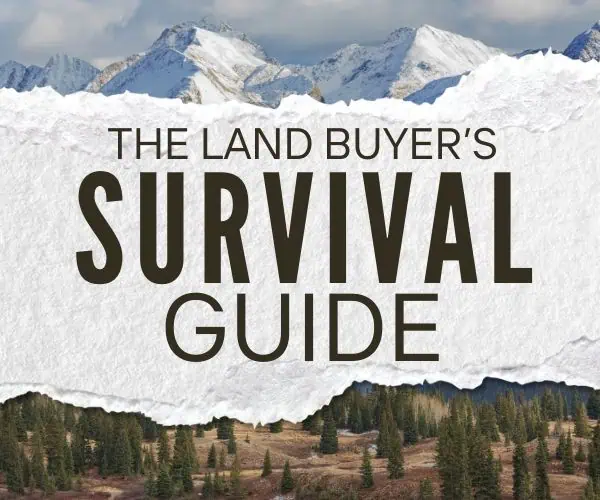
Do you want to generate consistent, inbound motivated seller leads that come to you instead of chasing them down?
SEO (search engine optimization) is one of the best ways to make this happen. Having a website that shows up on the top of Google for people searching about how to sell their houses can be a gold mine for your real estate investing business.
We’ve shown you the first and second steps in this process in our SEO for Real Estate Investors Series. But you can’t stop there; merely having a thoughtfully crafted and professional-looking website will not move you past the tenth page of Google. You need a boost to get you to page one.
“How do I boost my house buyer website to page one?” you might ask.
One word: backlinks.
An Overview of Backlinks
Having authoritative sites link to yours is the fastest and most effective way to climb the rankings and get more traffic.
The only issue is that building links the right way is time-consuming. Not to mention some approaches either don’t work or can even hurt your site.
In this article, we’ll share some of the most common link-building strategies you can implement right now and begin building your site's authority.
How Backlinks Work
Before we get into the best link-building strategies, you must understand how backlinks work.
You can think of backlinks as the currency of the internet. When one website links to another, Google sees it as a “vote” that the site it’s pointing to is legitimate and can be trusted.
Without building backlinks, it is nearly impossible to rank a website for competitive keywords. For example, a top-tier site like Forbes has over 100 million backlinks from over 1 million different websites.
The good news is that you won’t need nearly that many links for the keywords you’ll need to rank for to attract motivated sellers in your area.
But you will need some. And we’ll show you exactly how to get them.
How Backlinks Boost Your Site’s Authority
Every time a new website links to yours, some of its authority passes over to you. It’s like having someone put in a good word for you when applying for a new job. You get to benefit from the influence they have already created.
Now, not every backlink is created equally. Several factors go into the benefit you receive from a new link, but the most prevalent factor is the website's authority. So, for example, a link from Better Homes & Gardens will provide much more power than one from a smaller site like, well, yours if you’re just getting started.
But don’t worry—as you attract more and more backlinks from high-authority sites, your authority will slowly grow until you reach the point where other sites begin asking you for links.
How to Track Your Site’s Authority
The industry standard tool for tracking the authority of a website is Ahrefs. Not only can you easily find your website's authority ranking with their free website authority checker, but you can also see where each site you get a link from stacks up.
Ahrefs assigns two authority metrics: Domain Rating (DR) and URL Rating (UR). Domain Rating assesses the authority of a website as a whole, while URL Rating is page-specific.
As you build backlinks to a specific page, its UR grows, and the DR of your entire site increases at the same time. When getting started, your main concern will be to increase the DR of your entire website. However, once you start progressing, you’ll likely want to boost the UR of individual pages to get them to rank for specific keywords.
While Ahrefs is one of the most commonly used tools by SEO professionals, it’s just one tool. The metrics it assigns to each website are based on its own algorithm, not Google’s, so DR and UR are not directly correlated to ranking. However, they have put extensive research into developing this algorithm, so it’s closely correlated in most cases.
The Fundamental Rule of Link Building: Value Exchange
While juggernaut sites like Investopedia and CNN passively attract backlinks from content writers looking to cite an authoritative source, this likely won’t happen to you for a while.
For the rest of us, we have to think about what we can give in exchange for a link. So many website owners go out and start begging other sites for links; the problem is they go about it all wrong. They only think about what’s in it for them.
The result is that most of their outreach prospects flat-out ignore them.
So how can you be different? Think about what other website owners want. Money, content, and links are the most common forms of compensation for backlinks.
Money: Should You Buy Backlinks?
Money is the lowest form of value that you can provide in exchange for a link. Technically, paying for a link is entirely against Google’s policies. But that doesn’t prevent people from doing it every day.
Most website owners that ask for payment pitch it as an “editorial fee,” where you are paying them for their time to edit a page and insert your link.
We’ve found that most websites that charge money for links are not even powerful enough to move the needle for you. This is a massive generalization, but many of them understand the inherent value of a backlink and have made selling links their primary business model.
Our advice on paying for backlinks: do not rule it out altogether because there may be valuable links where the website owner just prefers to be paid. At the same time, you shouldn’t go crazy with this approach and start shelling out money to every website that asks to be paid for a link.
Content: Providing Value
The next step above paying for backlinks is providing value with stellar content. Writing guest posts and publishing linkable content can play out in two ways.
Countless guest post farms couldn’t care less about the quality of your content as long as you pay them. These are not the types of backlinks you should be going for.
The websites that will actually make a difference will typically appreciate thoughtful content. Some of them might like your writing so much that they ask you to write for them regularly.
Many of the link-building strategies in this guide involve reaching out to content writers and asking them to link to your articles. The value proposition is that your content is abundantly more informative than what they are currently linking to.
Links: Offering an Exchange
Remember how we said earlier that backlinks are the currency of the internet?
It’s true. Any website with enough authority to boost your ranking with a backlink understands that links have inherent value.
What if you could provide a website with a backlink in return for them linking to you? That would certainly grab their attention!
The problem with this approach is that most people try to do a direct link exchange where they get a backlink from a site and then link to them from their own website. While this used to work, Google has gotten too smart for this and doesn’t give either site much benefit for it.
The Importance of a Blog
If you’ve read our article about optimizing your house-buyer website for conversions, you know the importance of setting up the primary pages on your site. Your homepage, How It Works, About Us, and Reviews pages are crucial for converting traffic into leads.
Most real estate investors stop there.
If you are serious about dominating your market in SEO, you must consistently publish engaging content on your blog. This grows the authority of your site in multiple ways.
RELATED: SEO for Real Estate Investors Part 1: Inbound Motivated Seller Leads
Blog Articles Provide More Opportunities for Links
Regarding link-building, a broad portfolio of blog articles on your site gives other websites many targets to link to. Remember how a content writer must see value in linking to you? The problem is that linking to a page that screams, “We buy houses for cash!” doesn’t fit naturally within most articles.
Many content writers try to link to a few authoritative sources within each article they write. First and foremost, they do this for the Google algorithm. But they also do it to allow their readers to dig deeper into a topic they don’t have the opportunity to delve into based on the main topic they are covering.
So why shouldn’t they link to you?
If you have a wide range of real estate topics on your blog, you can begin spreading backlinks across all of them. The key is to cover topics that your traffic wants to read about that would also provide value within other pieces of content. An example of this would be an article that discusses the details of an all-cash offer.
A Blog Increases Your Knowledge Graph
Beyond giving more targets for websites to link to, a complete blog allows you to rank for significantly more keywords and generate much more traffic than your primary pages ever could.
There are only so many keywords that your homepage will ever rank for, but those terms aren’t the only ones motivated sellers to search for. By writing content that ranks for the terms they’re looking for, you can intercept that traffic and pull them into your funnel.
Traffic is another factor that Google considers when assessing the health and authority of a website. By finding terms that get a large number of searches each month but are relatively easy to rank for, you can climb the rankings quickly with backlinks and generate significant traffic to your site.
As Google sees you get more and more traffic, they will begin to trust you more with more competitive keywords and make it easier for you to rank for them.
Passing Link Authority With Internal Links
You might be thinking, “Wait, I have to direct all my backlinks to blog articles? But I need my homepage to rank to start getting leads!”
That’s totally understandable. In reality, your homepage will likely be where most of your conversions happen.
The good news is that you can power up other pages with the links pointing to your blog posts. This is all possible with internal linking.
Let’s say you build hundreds of links to a popular blog article that you wrote. If you place a link within that article to your homepage, some of the authority flowing into that article from the backlinks will get channeled over to your homepage through the internal link.
The good part about this strategy is that it doesn’t dilute the power the blog post receives. It essentially creates more link power out of thin air!
Unlike money, more backlinks are created each day without causing inflation!
Apart from powering up other pages through internal linking, spreading links across your site increases your overall domain rating and makes it easier for each page to rank for its targeted keywords.
Using HARO to Build Backlinks
One of the best ways to build high-octane backlinks is by using Connectively. This platform puts journalists together with expert sources on their writing topics. Some journalists write for high-profile publications such as Better Homes & Gardens, GOBankingRates, and Apartment Therapy.
There are two plans, Lite (free) and Core $19 per month). Lite unlocks five pitches per month, and Core unlocks fifteen pitches per month. Unlike Core, Lite is free but offers limited features and lacks email alerts. At $19 per month, Core provides excellent value by enabling you to submit pitches first. This is crucial as reporters usually select the best one or two pitches for quotes before being overwhelmed by submissions.
The only drawback to Connectively is that it is extremely competitive because many real estate investors and other people doing SEO know about it. However, this shouldn’t deter you because a few home runs here can quickly launch you to the top of Google.
Unlike many other link-building strategies, HARO backlinks typically point directly to your homepage, which you will probably try your hardest to rank to generate motivated seller leads.
The key here, just like most forms of marketing in real estate investing, is consistency and quality. You will likely be disappointed if you only sporadically respond to queries. But if you spend some time responding to the emails as soon as they come, you will likely begin getting some significant backlinks.
Andrew Helling, owner of Helling Homebuyers, uses Connectively to build links and has a 10% close rate, telling us:
“The key to a great Connectively pitch is to spend time on it. I take about 30 minutes to craft a pitch, and several journalists have told me that my pitch stood out because of its length, depth, and structure.”
Here's the exact template that Andrew has used to win links from Martha Stewart, Forbes, Insider, MSN, and many other well-known publications:
“Hi [name],
Regarding your request about using Connectively to earn links…
My name is Andrew Helling, the founder of Helling Homebuyers, a Nebraska-based property investor and a formerly licensed real estate agent. I use Connectively up to three times per day, so I consider myself an expert on crafting an effective pitch. Here are my thoughts:
Why Connectively is effective:
1. Expertise and credibility: By sharing your expertise and experience with journalists, you are enhancing the credibility of your brand and personal profile. This exposure can attract additional links, establishing you as an authority and topic expert, increasing both your and your brand's E-E-A-T.
2. Decreases workload: Most reporters aren't topical experts, so providing them with detailed, quotable blurbs lets them use your quote as the meat and potatoes of their story and just expand upon or add context to it. This significantly reduces their workload and lightens the burden of researching the topic.
3. Cost-effectiveness: Unlike traditional link-building campaigns that involve significant investment and low conversion rates, there is very little cost to use Connectively. As long as you stay consistent, pitch any and all relevant opportunities, and don't get discouraged at the low conversion rates, you can eventually earn a few big links that will really move the needle on your credibility and search rankings.[question 2]
1. 1-3 word summary and 2-3 quotable sentences.
2. 1-3 word summary and 2-3 quotable sentences.
3. 1-3 word summary and 2-3 quotable sentences.If you need anything else or want me to clarify any of my thoughts, please feel free to reach out.
I look forward to hearing from you!
City: Omaha, NE
Email: my email address
Company: my company
Phone Number (cell): my phone number
Bio: Andrew Helling is the founder of Helling Homebuyers, an Omaha-based property investor that specializes in helping property owners sell their homes quickly and easily.'”
Broken Link Building
Sometimes a website will publish an article with a handful of external links, and not much later, one of the pages they are linking to gets removed. So now, whenever someone clicks on that link, it goes nowhere.
That’s not a good look!
Although this is obviously an issue, most site owners are completely unaware of it. They’ve moved on to writing more content, and their previous articles are a thing of the past.
However, many websites will appreciate it if you point this out to them and offer them a replacement for the old article.
The question is, how do you find these opportunities? Ahrefs’s Content Explorer is an excellent tool to search for pages that cover a particular topic and filter them only to show broken pages. Then, you can reach out to all the websites still linking to that article and pitch yours as a replacement!
Although this link-building strategy allows you to find some low-hanging fruit, many site owners simply don’t care that they have a broken link. They’ve moved on to bigger and better things. However, some will be happy to link to you instead.
The Skyscraper Technique
Have you ever searched for something on Google, only to be disappointed by the mediocrity of the content of the top results?
It happens all the time.
The thing is, many of these articles receive tons of links without having to work for them. Writers link to them without reading them because they need a quick source to link to, and the top ones are the easiest to pick.
If you come across this situation, you can either:
- Complain about it, or
- Capitalize on it.
Instead of wondering how in the world those articles got to the top of Google, you can write a piece of content that’s twice as engaging and informative. Then, you can reach out to all the sites linking to the top results and ask them to link to you instead.
A caveat: you will have to do a lot of outreach to get a significant number of links. Even though your new content is likely way better than what someone is currently linking to, many of them simply don’t care to go back and change their article.
However, this shouldn’t discourage you from using this strategy because it can be a great way to build links.
Passive Link Building
Remember how we mentioned that when most content writers are working on an article and need a source for something, they’ll simply go on Google and find one of the top results and link it?
This is part of the vicious cycle of SEO. It takes links to rank for keywords, and the top results passively get more links, making them even stronger.
But what if you could hack this cycle and begin attracting backlinks passively?
The first way to do this is to find a topic that gets mentioned often, such as flipping houses. Next, your job is to write an amazing piece of content that websites will want to link to. Because it will be an uphill battle at first, you’ll need to create an article that is head-and-shoulders above the competition.
Even though the goal is to attract backlinks passively, you’ll have to work at it upfront. The issue is that you’ll likely be competing with pages that already have a ton of backlinks, and you’ll never get the passive links they’re getting unless you surpass them in rankings.
A faster way to attract passive backlinks is by publishing content around emerging trends. Because those topics are newer, the top of the search results will be less crowded by the bigger websites.
Along with emerging trends, one of the best ways to attract backlinks is by publishing statistics. Many content writers look up stats for their articles, and if you aggregate a bunch of data in some of your posts, they’ll likely find you and start linking to you.
Guest Blogging for Backlinks
This strategy alone (combined with the next section) can bring you all the backlinks you’ll ever need as a real estate investor.
The approach is pretty simple. Instead of writing content solely for your blog, you can periodically write for other websites in the real estate industry. In each article you write, you can embed one or two links to articles you are trying to rank and a link to your homepage in your author bio.
But who should you write for?
Ideall, you should write for sites with domain ratings significantly higher than yours. The higher the authority of the site you get a backlink from, the stronger the boost you will see in rankings.
But then you might think, “How do I decide whether to publish an article on my blog or another website?”
In reality, one of the easiest places to find guest post opportunities are websites that talk about real estate investing. Since you, as an investor, have field experience in this niche, many websites will be happy to use your content.
Also, because the content on your site should be geared toward motivated sellers, there shouldn’t be too much overlap between what you are writing for your blog and your guest post content.
Leverage-Based Guest Posting
But before you get excited and set out to find guest post opportunities, remember: you must provide value. Otherwise, you will be sorely disappointed with your outreach results.
While it is true that many websites will appreciate your perspective as an actual real estate investor, you’ll often need a bit more leverage to get your foot in the door. After all, most sites you will be reaching out to have their own writers.
So what will grab their attention?
When discussing the value exchange in link building, we mentioned the three most common forms of leverage (buying links, writing content, and exchanging links). Out of the three, the most powerful is your ability to provide links in return. After all, backlinks are the currency of the internet, and any site strong enough for you to want to guest post for knows the value of a good link.
The key is to be on the hook for writing multiple guest posts simultaneously. Say you’re writing articles for websites A, B, and C. Within the content of your article for website C, you can link to website A. Then, in your guest post for site B, you can link to website C, and so forth. That is how you can build a network of backlinks and use that as leverage when looking for new opportunities.
If you provide insightful content in your guest posts, some websites will likely ask you to write for them regularly. This will help you grow your network even more by knowing that you have a steady platform to provide new backlinks from.
Link Exchanges
Just by following the steps above, you can develop an entire network of guest post opportunities to build all the backlinks you’ll need to rank in your market.
However, if you’re like us and you want to supercharge your link-building efforts and get to the top as fast as possible, another way to do this is through link exchanges.
Instead of relying solely on the backlinks you create for yourself, you can leverage the work of other people doing the same thing. If you find a few people that are frequently guest posting, you can trade links with them.
Here’s how it works. When you write one of your guest posts, insert a link to one of your friend’s articles. Then, in one of the guest posts they have in queue, they can link back to you.
The beauty of this strategy is that it is an indirect link exchange and looks completely natural. Several years ago, people used to do direct link exchanges where site A would link to site B, and then site B would link to site A in return.
However, Google has gotten much more intelligent in recent years. Not only do direct link exchanges provide virtually zero benefit but they can also actually be detrimental if used frequently. The indirect link exchange mentioned here provides each site the benefit of a backlink and is virtually untraceable.
How Many Backlinks Do You Need to Rank?
Unfortunately, there is no magic number that works for every house buyer website. Evaluating your competition is the best way to determine how many backlinks you will need. Search for terms that you want to rank for, such as “sell my house [your city]” and “we buy houses [your city],” and study the top-ranking website and their apparent link-building strategy
You can then use a tool like Ahrefs to see how many backlinks each of your competitors have. Mind that every backlink provides a different amount of ranking power. The best thing you can do is count up all of the dofollow backlinks they have from legitimate sites with domain ratings over 20. If you can beat that number, you will have a solid chance of outranking them, especially if you have some high-DR links.
If you devote several months to a year to the link-building strategies discussed in this article, there is no doubt that you will shoot to the top of Google for many of the terms motivated sellers search for!
Launch Your Website to the Top With Backlinks!
There is no doubt that you need backlinks to rank at the top of Google for your target keywords. In fact, once you have your website in place, link building should be your top SEO priority.
The good news is that SEO isn’t as competitive in real estate as in other niches. The bad news is it probably won’t be like that for long. But if you jump in now and get ahead of the wave, you can generate consistent motivated seller leads that show up in your inbox.
If you pick a few of the strategies we’ve discussed and stick to them, your site will be ranking in no time!
In the final part of this series, we’ll demonstrate all the strategies we’ve discussed so far, so watch out for it!















